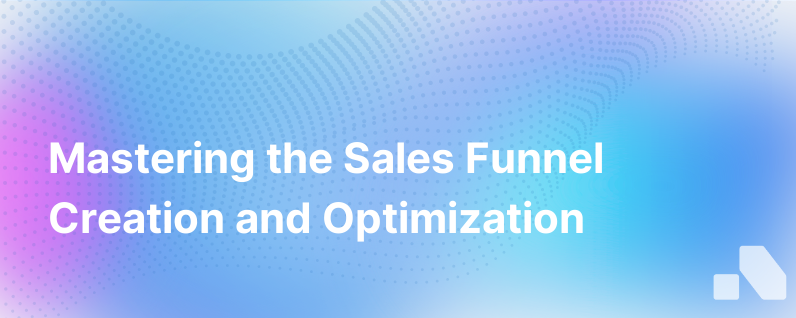
Sales funnels – if you're in business, you've likely heard the term thrown around. But what is a sales funnel, and how does one construct an effective one that turns leads into recurring revenue? In this blog post, we'll explore the intricate architecture of the sales funnel and provide actionable steps for businesses to craft their own compelling pathway to customer conversion.
Understanding the Sales Funnel
At its core, a sales funnel represents the customer's journey from first becoming aware of your brand to making a purchase and beyond. It's a systematic approach to understanding and enhancing the buyer's experience. A well-structured sales funnel is crucial for any business as it clarifies the path a prospect takes to become a customer and helps you understand where you're losing potential customers along the way.
The Stages of the Sales Funnel
1. Awareness: The top of the funnel is all about visibility. Potential customers discover your brand through various channels such as social media, advertisements, blog posts, or word of mouth.
2. Interest: Once aware, prospects express interest by engaging with your content or brand. This stage is characterized by research and exploration.
3. Decision: The prospect is now considering taking action. They compare your offerings to competitors and negotiate prices or packages.
4. Action: Finally, the prospect converts into a customer by making a purchase.
5. Retention and Advocacy (Post-Purchase): Beyond the traditional funnel lies the ongoing relationship – customer service, upsells, and turning customers into loyal advocates.
Constructing a Robust Sales Funnel
A rock-solid sales funnel doesn't just manifest. It takes careful planning, execution, and continuous optimization. Here's a step-by-step guide:
Step 1: Unveil Your Target Audience
Begin by outlining in detail who your ideal customers are — understanding their pain points, desires, buying behavior, and where they hang out online. Building detailed buyer personas can help pave this foundational step.
Step 2: Generate Awareness Strategically
You can't expect potential customers to travel down your sales funnel if they don’t know it exists. Engage in marketing activities tailored to your target audiences like content marketing, SEO, PPC ads, or social media to get your brand noticed.
Step 3: Cultivate Interest with Valuable Content
Once you have the attention of potential leads, deliver value. Provide educational content that helps them better understand their challenges and how your product can be the solution. Use blog posts, whitepapers, webinars, or e-books to establish thought leadership.
Step 4: Nurture Leads Towards a Decision
As leads shift from mere interest to considering a purchase, it’s time to nurture those relationships. Personalize communications, offer free trials, demos, or detailed proposals. Highlight unique selling points and customer testimonials to differentiate your offering and address common objections.
Step 5: Motivate Action With Persuasive CTAs
A clear, compelling call-to-action (CTA) is the crux of the action phase. Whether it's 'Buy Now', 'Schedule a Call' or 'Start Your Free Trial', your CTA should make it easy for the lead to become a customer. Ensure a frictionless experience with streamlined checkout processes or easy sign-ups.
Step 6: Retain and Grow Post-Purchase
The end of the funnel is not the end of the road. Implement follow-up strategies to encourage up-selling, cross-selling, and referrals. Use customer feedback to refine your offering and address issues. Build a community around your brand to drive loyalty and repeat business.
Step 7: Analyze and Optimize the Sales Funnel
Finally, inspect what you expect. Regularly analyze how leads move through your sales funnel. Tools like Google Analytics, CRM software, or specialized sales funnel software (like Aomni) can provide invaluable insights on conversion rates at each stage, bottlenecks, and areas for improvement.
Best Practices for Sales Funnel Optimization
Here are some tips to make your sales funnel as efficient as possible:
- Test Everything: From landing page copy to email subject lines, always be testing and learning.
- Listen to the Data: Let metrics guide your decision-making.
- Personalize the Experience: Use the data you collect to create personalized journeys for different customer segments. Tools like Aomni can help with this.
- ** Leverage Automation:** For efficiency at scale, use marketing automation tools for tasks like email sequences.
- Train and Equip Your Sales Team: Ensure they know the funnel stages and how to guide prospects through seamlessly.
In Conclusion
A seamless and strategic sales funnel is vital for converting prospects into paying customers. It provides a framework for businesses to systematically attract, engage, and delight leads, turning them not just into customers but into loyal brand advocates.
Remember, a sales funnel is not a set-it-and-forget-it tool. It needs constant iteration and a deep understanding of customer behavior to thrive. As your funnel evolves, so will your business, aligning more closely with the needs and desires of your market—translating to sustained revenue and growth.
In the ever-evolving world of sales and marketing, having an intelligent platform like Aomni can be a transformative asset in understanding and optimizing your sales funnel, ensuring that your strategies are powered by real-time insights and aligned with your growth objectives.